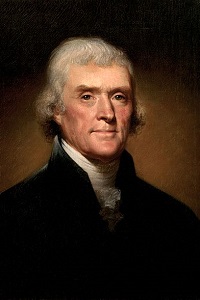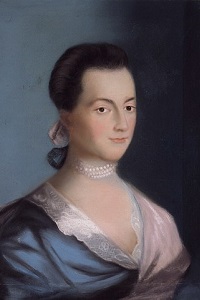Take the Founders’ Example — Your Legacy Begins Now
The modern world is not imaginable without the United States of America. Today, we look back on America’s founding fathers and the documents they produced as sources of timeless wisdom and guidance. It may be true that “with age comes wisdom,” but the founders and fathers of the American Revolution provide notable exceptions. These young men and women prove that becoming an influencer, creating your legacy, and changing the world doesn’t have to wait 30 years — it starts today.
Some iconic figures such as George Washington, Paul Revere, and John Adams were in their early forties at the time of the signing. Many others were even younger, yet their legacy lives on as the founders of one of the freest, most prosperous countries to ever exist. The ages displayed in parentheses indicate how old, or rather how young, these Revolutionary War figures were on July 4, 1776.
 Thomas Jefferson (33)
Thomas Jefferson (33)
One of the signers and the primary author of the Declaration of Independence, Thomas Jefferson went on to be the third president of the United States in 1801. Jefferson’s preamble is regarded as a powerful and enduring statement of human rights.
“…all men are created equal, that they are endowed, by their Creator, with certain unalienable Rights.” This short phrase established two fundamental concepts that endure in America today — equality under the law, and inalienable, God-given rights that place limits on government.
 Abigail Adams (31)
Abigail Adams (31)
Abigail Adams was the beloved wife, and intellectual counterpart, of John Adams. The two exchanged over 1,100 letters regarding government and politics. John frequently sought her advice, including while in the Continental Congress. Abigail saw slavery as evil and a threat to the American experiment, and she advocated property rights for married women.
A famous line in her March 1776 letter to John goes, “remember the ladies, and be more generous and favorable to them than your ancestors. Do not put such unlimited power into the hands of the Husbands. Remember all Men would be tyrants if they could. If particular care and attention is not paid to the Ladies we are determined to foment a Rebellion, and will not hold ourselves bound by any Laws in which we have no voice, or Representation.”
 James Madison (25)
James Madison (25)
James Madison’s entrance into political leadership was a seat on the local Committee of Safety, a pro-revolution group that oversaw the local militia. Later, he became known as the “Father of the Constitution,” organizing the Constitutional Convention after the Articles of Confederation proved ineffective, and working to ratify the U.S. Constitution. He co-authored The Federalist Papers with John Jay and Alexander Hamilton, but opposed Hamilton’s effort to centralize power in other areas, leading him to form the Democratic-Republican party with Thomas Jefferson.
Madison led the U.S. through the War of 1812. After the war, he supported a stronger federal government and military, and the establishment of a national bank to deal with foreign affairs, including investment in the U.S. economy.
 Betsy Ross (24)
Betsy Ross (24)
Ross’ family writings suggest that after a visit from commander-in-chief of the Continental Army George Washington, she made the first American flag. She successfully convinced Washington to change his sketch of six-pointed stars to five-pointed, after demonstrating they were easier to cut. During the Revolutionary War, Ross repaired uniforms, made tents and blankets, and packaged ammunition for the Continental Army.
 Alexander Hamilton (21)
Alexander Hamilton (21)
Hamilton was an orphan taken in by a wealthy merchant and sent to school in New York as a teenager. As Revolutionary sentiment heated up, Hamilton was eager to graduate and get involved. He was a senior aide to General Washington during the Revolutionary War. Hamilton was ahead of his time, active in ending the legality of the international slave trade. He was the financial mastermind of the founders, and advocated for the establishment of a national bank to be overseen by the federal government. He died by gunshot wound in a duel with Aaron Burr over competitive insults exchanged in the race for governor of New York.
 James Monroe (18)
James Monroe (18)
As a young man in the Revolutionary War, James Monroe was wounded in the Battle of Trenton from a gunshot to the shoulder. He studied law under Thomas Jefferson from 1780 to 1783 and served as a delegate in the Continental Congress. Monroe opposed ratification of the U.S. Constitution, concerned about the centralization of power it directed to the federal government. Nevertheless, he served in the first Congress of the United States and was the fifth president of the United States.
Many of us have long-term goals and aspirations that we could never imagine coming to fruition any time soon. Reflecting on the Founders’ example, and their achievements as strikingly young men and women, serves as a reminder that we are no more capable in 30 years than we are today.
Take your goal and make a game plan. If Thomas Jefferson wrote the Declaration of Independence at age 33, you can come up with concrete small steps and deadlines you can achieve to make your far-off ambition as real as the Declaration of 1776.




